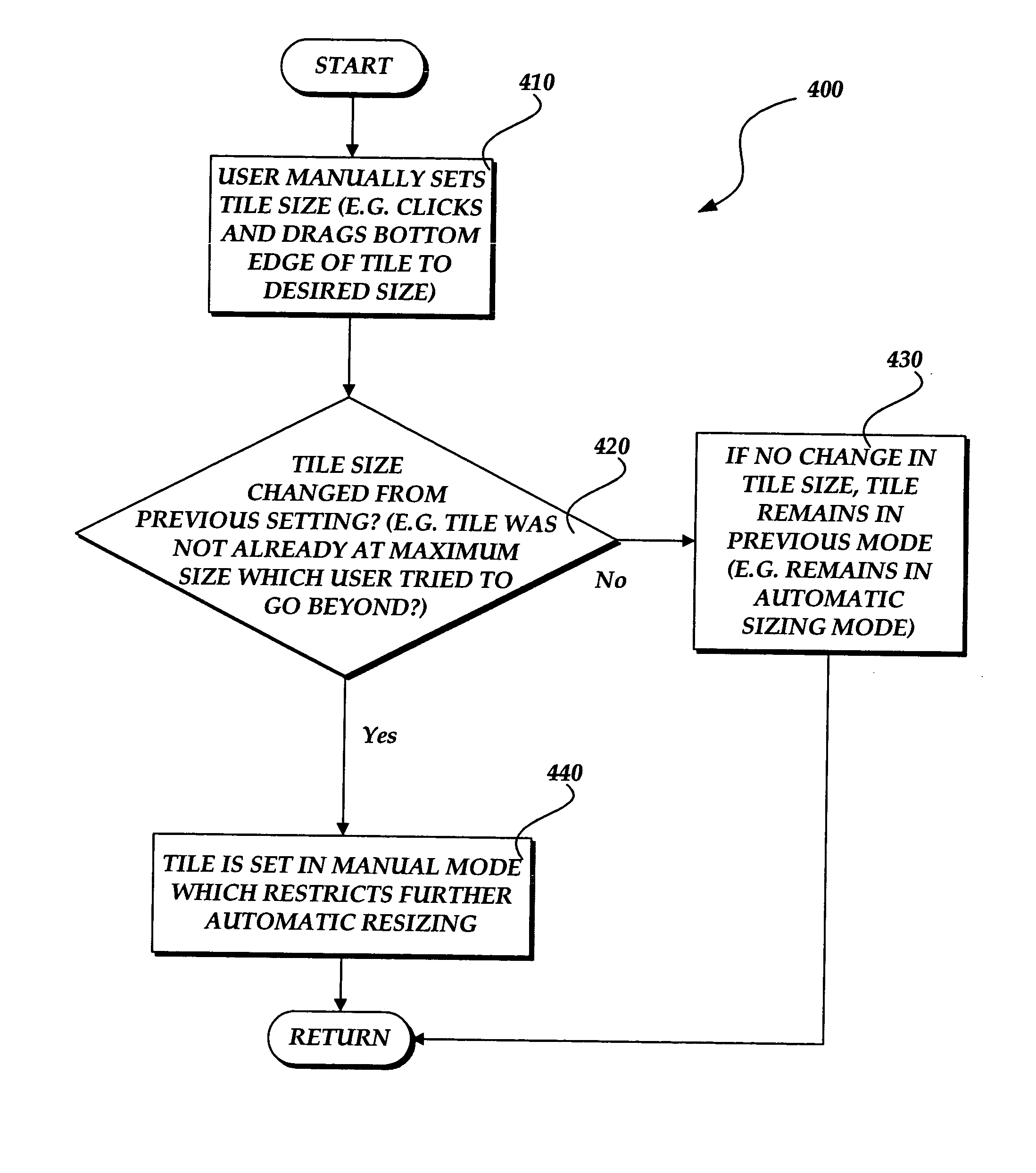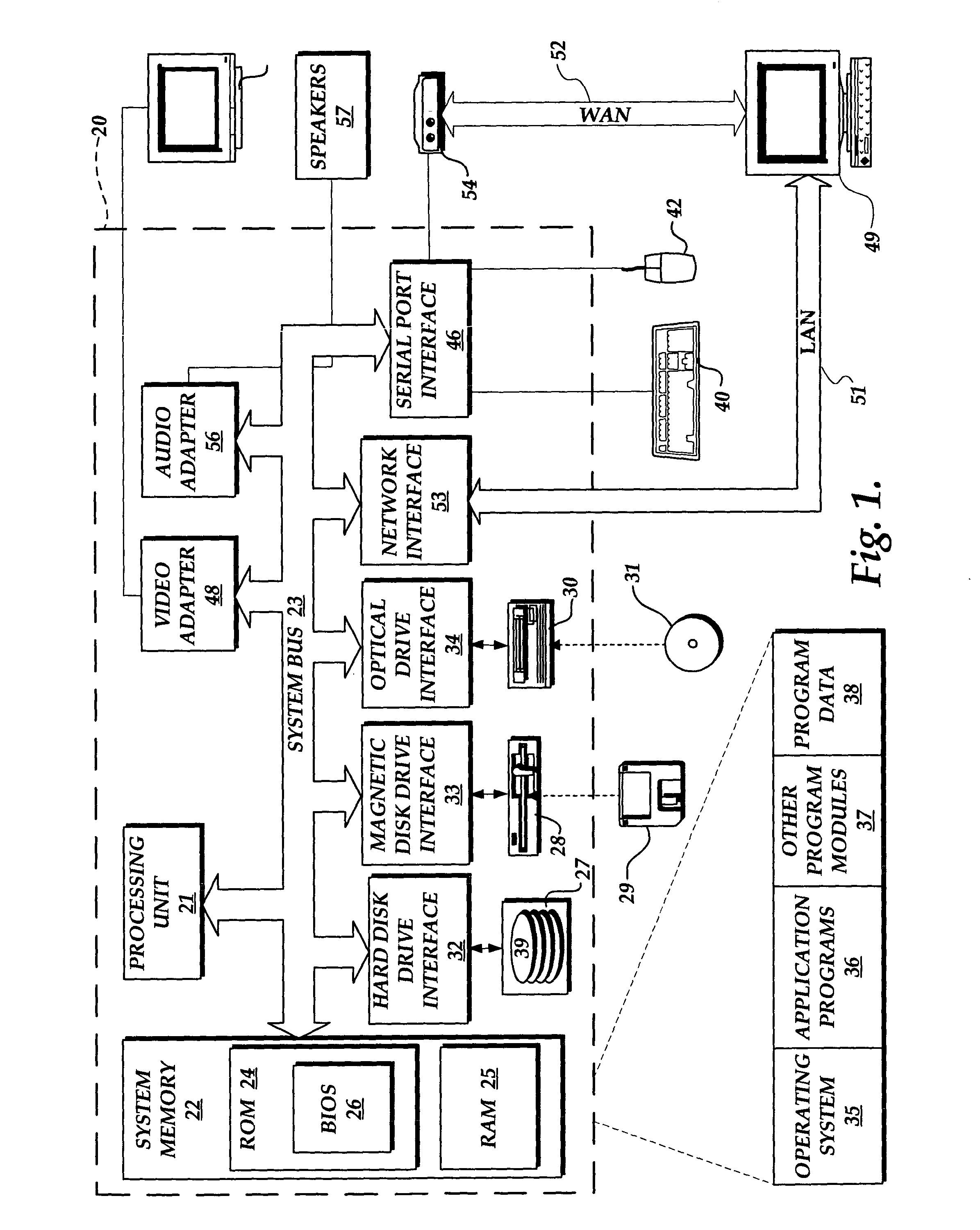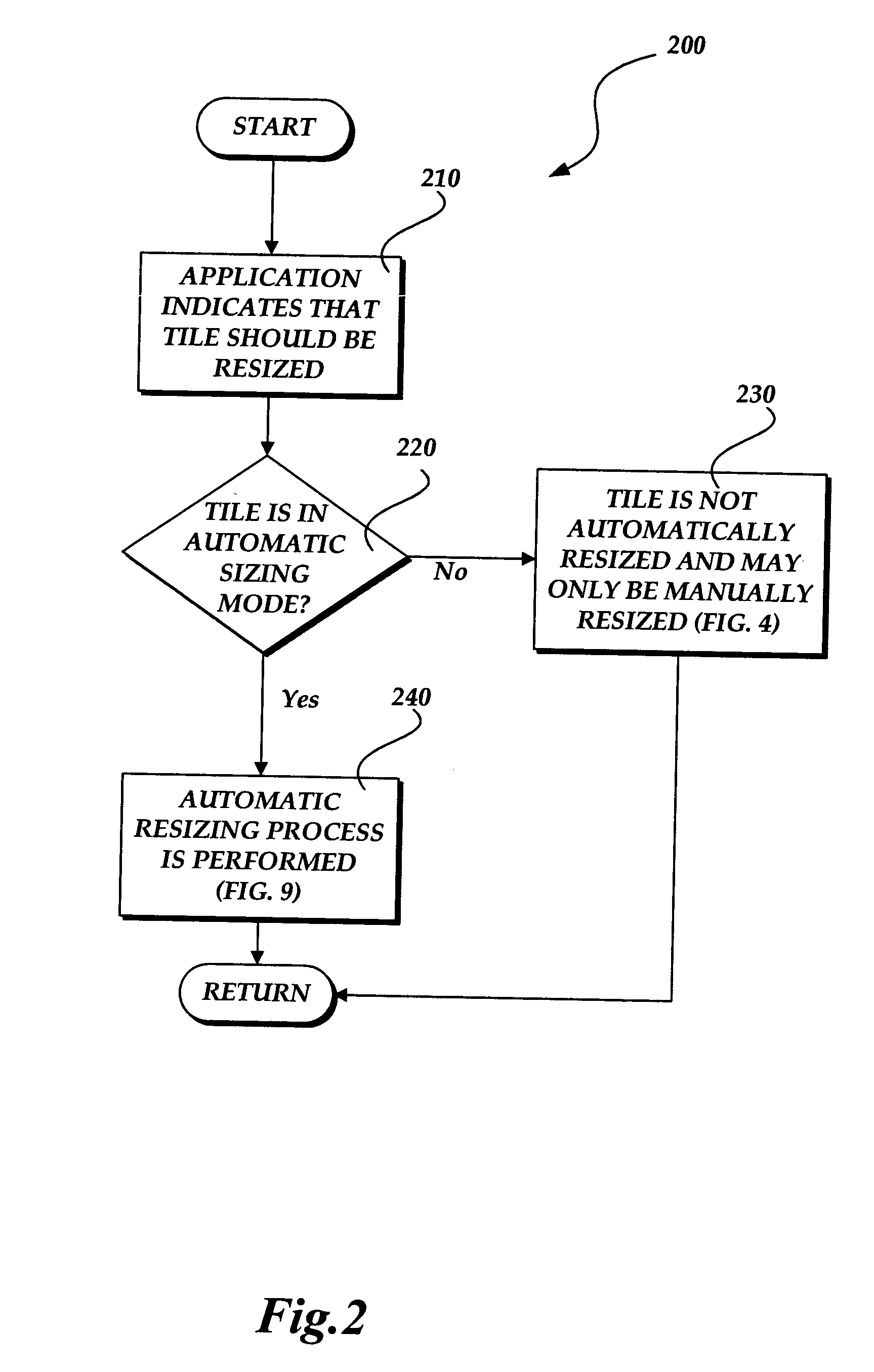System and method for resizing tiles on a computer display
a computer display and tile technology, applied in image data processing, program control, instruments, etc., can solve the problems of not being able to build a tile, users would be forced to manually control the size of all the tiles, and users would not be able to control the allocation of space in the sidebar
- Summary
- Abstract
- Description
- Claims
- Application Information
AI Technical Summary
Benefits of technology
Problems solved by technology
Method used
Image
Examples
Embodiment Construction
[0026] The embodiment of the present invention is directed to a system and method for resizing tiles on a computer display. As will be described in more detail below, in accordance with the embodiment of the present invention, the tiles are automatically sized until a user takes control, after which the user may manually set the size of the tiles. By allowing both the application to choose its own size and allowing users to override that size, properly designed tiles can be provided that use the right amount of space, and users are able to stop poorly designed tiles from taking too much space.
[0027]FIG. 1 and the following discussion are intended to provide a brief, general description of a suitable computing environment in which an embodiment of the present invention may be implemented. Although not required, the embodiment of the invention will be described in the general context of computer-executable instructions, such as program modules, being executed by a personal computer. ...
PUM
 Login to View More
Login to View More Abstract
Description
Claims
Application Information
 Login to View More
Login to View More - R&D
- Intellectual Property
- Life Sciences
- Materials
- Tech Scout
- Unparalleled Data Quality
- Higher Quality Content
- 60% Fewer Hallucinations
Browse by: Latest US Patents, China's latest patents, Technical Efficacy Thesaurus, Application Domain, Technology Topic, Popular Technical Reports.
© 2025 PatSnap. All rights reserved.Legal|Privacy policy|Modern Slavery Act Transparency Statement|Sitemap|About US| Contact US: help@patsnap.com



